In the last few weeks a purchase of pure gold reached a record high of over $2,400 an ounce. Thanks to uncertain global markets and a stepped-up demand from China, the precious metal is a more popular investment than ever. I find it amazing you can stroll into your local Costco and add gold bars to your shopping basket. The promo was so popular however, Costco ran out of their allotment in a couple of months. But here’s an even bigger concern. I’m worried Costco’s going to run out of chocolate.
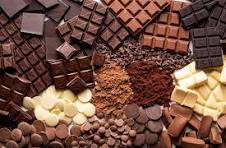 It takes a bold headline to get me to read the article, and here’s a recent example: Chocolate Might Never Be the Same. What I hoped would be several paragraphs about a newer or even healthier spin on my favorite confection was anything but. Instead, I was stopped dead in my reading glasses when I saw the words “global shortage”. It seems the world’s supply of cacao beans, which come primarily from West Africa, has been threatened by climate change.
It takes a bold headline to get me to read the article, and here’s a recent example: Chocolate Might Never Be the Same. What I hoped would be several paragraphs about a newer or even healthier spin on my favorite confection was anything but. Instead, I was stopped dead in my reading glasses when I saw the words “global shortage”. It seems the world’s supply of cacao beans, which come primarily from West Africa, has been threatened by climate change.

What I found interesting in the story was not so much the reasons for the shortage (drought, disease, aging cacao trees) but rather the speculation on how chocolate as we know it will change. Right away, of course, the cost of high-end products will increase (chocolate was already up 10% in 2023). Down the road, the powers that be may even relax the definition of “chocolate”, which currently requires (only) 10% of a product’s weight in cocoa. And further down the road you’ll find faux chocolate, which doesn’t contain any cocoa at all. Kind of like an Impossible Burger.
My relationship with chocolate, one that has matured beautifully over sixty-plus years, feels a little threatened. Like most kids growing up in the 1960s, I loved Hershey bars… and a lot of other candies that gifted me a mouthful of cavities. Then as a teenager, most of those candies fell by the wayside in favor of chocolate bars like 3 Musketeers, Milky Way, and Snickers. But technically each of those is a “candy bar”, where the only chocolate to be found is the outside coating.

I credit three products for developing my taste for “just chocolate”. First, Nestle’s Toll House Morsels, a bag of which could always be found in my mother’s pantry. Second, Chunky’s foil-covered blocks, which brought appeal to, literally, consuming chunk chocolate. Finally, Ghirardelli’s “Flicks”, colorful foil-covered tubes of what can only be described as oversized Toll House Morsels, sold alongside the popcorn and boxed candies at the movie theater.
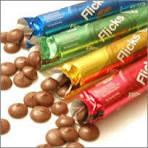
Little did I know at the time, I was nowhere near the best that chocolate had to offer. A college year in Europe introduced me to more exotic brands like Perugina, Lindt, and Toblerone, and my taste for chocolate quickly matured from the milk to the dark varieties. Here’s how far I’ve come since then. The percentage of cocoa in a pure bar of Lindt chocolate starts at 70% (and goes all the way to 100% if you’re so bold). My preference? 78%, a far cry from the minimum 10% definition of chocolate. And a far cry from the chocolate bars of my youth.
 We’re fortunate to have an authentic Belgian chocolate shop here in our small town. Its proprietor was trained as a chocolate artisan in Belgium, and her creations start with Callebaut chocolate (also from Belgium). Her truffles, as you can imagine, are exquisite. The pure chocolate nibs she sells by the pound are even better. And yet, as if to underscore today’s topic, her shop’s website now warns in a big, bold font: … at this time we are no longer able to accommodate wholesale prices. Meaning her big buyers are now paying as much as we smaller ones. Meaning chocolate is getting more expensive.
We’re fortunate to have an authentic Belgian chocolate shop here in our small town. Its proprietor was trained as a chocolate artisan in Belgium, and her creations start with Callebaut chocolate (also from Belgium). Her truffles, as you can imagine, are exquisite. The pure chocolate nibs she sells by the pound are even better. And yet, as if to underscore today’s topic, her shop’s website now warns in a big, bold font: … at this time we are no longer able to accommodate wholesale prices. Meaning her big buyers are now paying as much as we smaller ones. Meaning chocolate is getting more expensive.
 If the quality chocolate I’ve learned to love rises to price points I can’t digest, I might be forced to relive my childhood and settle for the “satisfaction” a milk chocolate Snickers bar claims to provide. It’s a regression I don’t look forward to, but at least it beats faux chocolate. Come to think of it, I should pick up a few of those gold bars at Costco. Maybe my Belgian chocolate shop takes more than cash or credit these days.
If the quality chocolate I’ve learned to love rises to price points I can’t digest, I might be forced to relive my childhood and settle for the “satisfaction” a milk chocolate Snickers bar claims to provide. It’s a regression I don’t look forward to, but at least it beats faux chocolate. Come to think of it, I should pick up a few of those gold bars at Costco. Maybe my Belgian chocolate shop takes more than cash or credit these days.
Some content sourced from The Atlantic article, “Chocolate Might Never Be the Same”, and Wikipedia, “the free encyclopedia”.


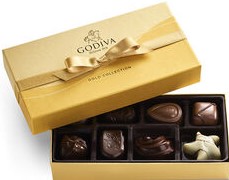
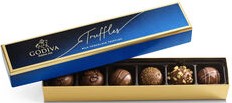


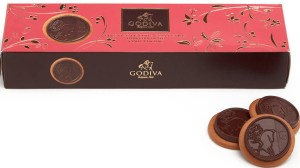






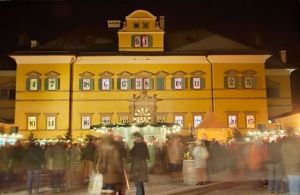


















 Royer’s Round Top Cafe, Texas
Royer’s Round Top Cafe, Texas

